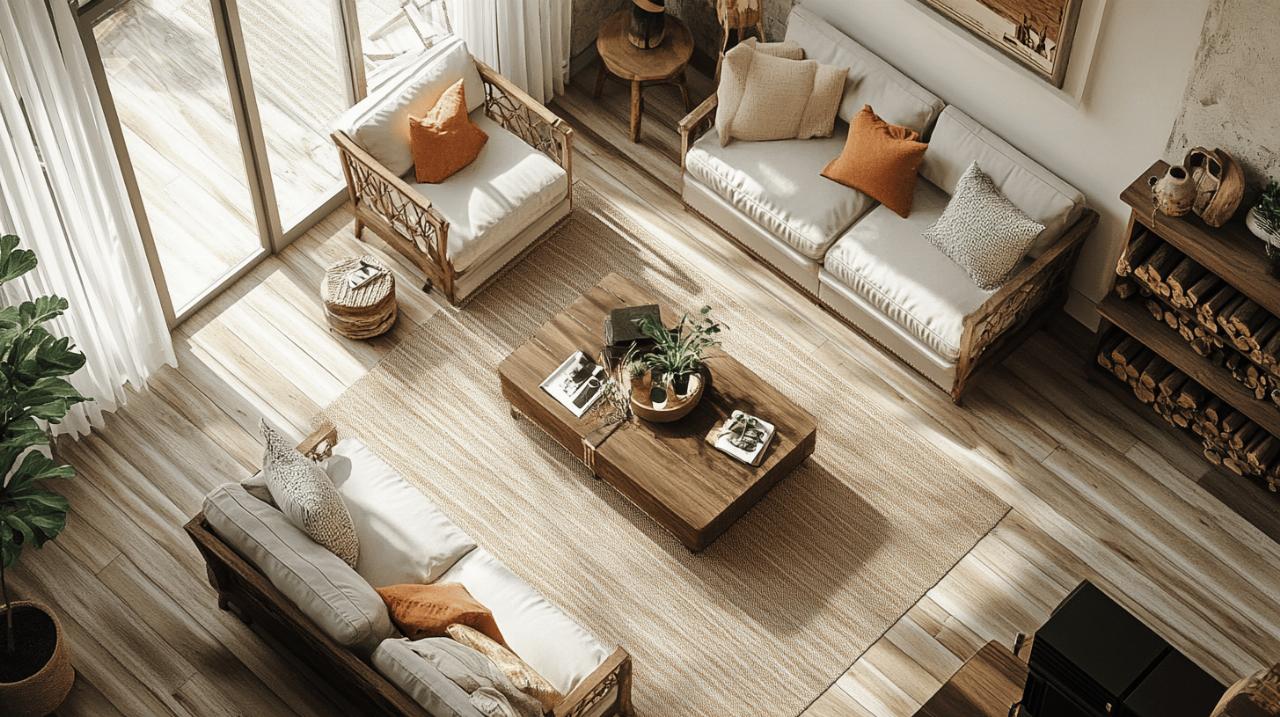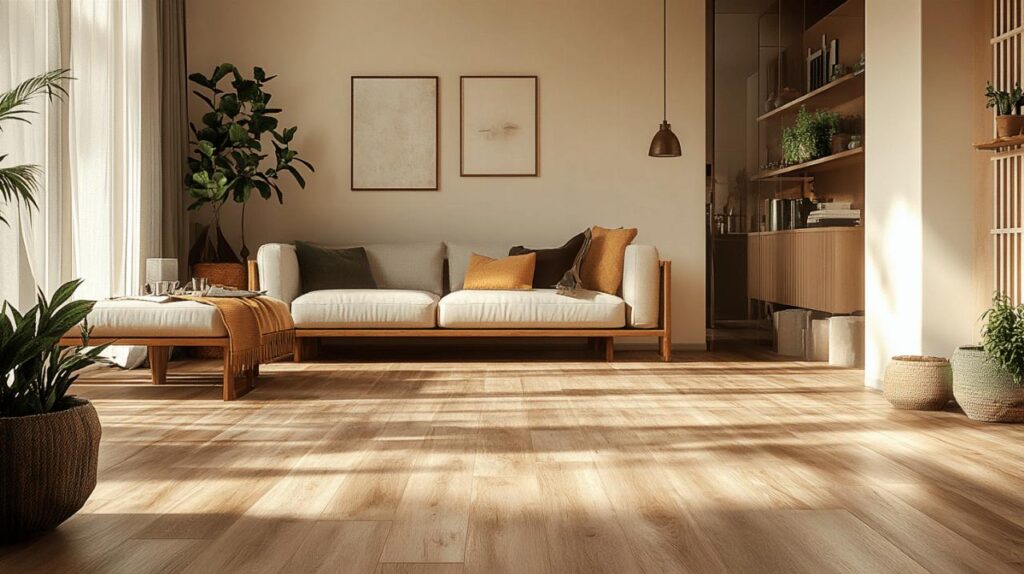When it comes to transforming your home, the orientation of your flooring is often an overlooked yet powerful design element that can significantly impact both aesthetics and functionality. The strategic direction of your floor planks or tiles can create visual illusions, enhance natural lighting, and establish a cohesive flow throughout your living spaces. Many homeowners focus solely on flooring materials without considering how their installation direction might transform a room's perception.
Understanding the Impact of Flooring Direction
The direction in which your flooring is laid creates immediate visual effects that can dramatically alter how a space feels. Many Tiendas de Decoracion and flooring specialists emphasise that orientation is as crucial as the material itself when planning a renovation project. Whether you choose luxurious hardwood, practical laminate, versatile vinyl, or elegant ceramic tiles, the directional layout influences spatial perception in surprising ways.
Visual effects of different orientations
Horizontal flooring installation, where planks run parallel to the longest wall, tends to create a sense of width in a room. This approach works wonderfully in narrow hallways or compact living areas that need visual expansion. Conversely, vertical installation, with planks running perpendicular to the entrance, draws the eye forward and can make a room appear longer. Diagonal placement creates dynamic movement and can make an unusually shaped room feel more balanced, while herringbone and parquet patterns add texture and character that elevate even simple spaces.
Creating the illusion of space through clever placement
For smaller rooms that need a spacious feel, light-coloured flooring materials like pale wood, bright vinyl, or cream-toned porcelain can reflect more light and create an airy atmosphere. Large format tiles or wide planks reduce the number of visible seams, creating a more continuous visual plane that expands the perceived dimensions of a space. Installing flooring diagonally can be particularly effective in compact areas, as this orientation tricks the eye into seeing the widest part of the diagonal rather than the actual room dimensions.
Making the Most of Natural Light
The relationship between flooring direction and natural light sources is a crucial consideration for maximising brightness and creating pleasing visual effects throughout the day.
How flooring direction interacts with windows and lighting
Flooring installed parallel to the main light source tends to create fewer shadows and a more uniform appearance throughout the day. In rooms with large windows, consider how sunlight travels across your floor and how different materials like polished laminate or reflective LVT might amplify available light. Wood floors with a slight sheen can bounce sunlight deeper into rooms, while matte finishes might absorb more light but offer a softer, more consistent illumination. The interplay between artificial lighting and flooring direction becomes especially important in spaces that see limited natural light.
Seasonal considerations for optimum light reflection
The angle of sunlight changes dramatically between seasons, particularly in northern regions. South-facing rooms receive consistent light throughout the year, making them ideal for darker flooring materials or more complex patterns like herringbone. East-facing spaces get bright morning light that highlights the texture of wood grain when planks run east to west. West-facing rooms receive intense afternoon sun that can create strong shadow lines between boards installed north to south. Understanding these seasonal light patterns helps ensure your flooring orientation enhances your space year-round rather than creating unwanted visual effects during certain months.
Character-building flooring patterns
Beyond basic directional choices, distinctive patterns can transform ordinary flooring materials into striking design features that define your home's personality.
Traditional layouts and their aesthetic appeal
Classic patterns like herringbone and parquet have endured for centuries because of their timeless elegance. Herringbone creates a sophisticated zigzag effect that adds movement and texture without overwhelming a space. Traditional parquet arrangements, with their geometric precision, bring formal elegance to dining rooms and entryways. Reclaimed wood flooring, available through specialists like The Reclaimed Flooring Co, offers authentic character with historical significance. When properly oriented within a room, these traditional patterns can anchor furniture arrangements and create natural focal points without requiring additional decorative elements.
Modern patterns for contemporary homes
Contemporary homes often benefit from more adventurous flooring orientations. Chevron patterns, similar to herringbone but with planks cut at an angle for a more defined point, create dramatic visual impact in open-concept spaces. Large-format tiles installed in brick-bond patterns offer clean lines with subtle interest. Vinyl flooring has evolved tremendously, now offering statement-making designs that can mimic concrete for industrial aesthetics or feature bold graphic patterns. Companies like Murafloor specialise in patterned vinyl that can transform ordinary rooms into distinctive spaces through orientation and design rather than through expensive materials.
Achieving cohesive flow between rooms
One of the most challenging aspects of flooring orientation comes when planning transitions between different areas of the home, particularly in today's open-concept living spaces.
Transition techniques for open-plan living
Using consistent flooring throughout connected areas creates visual continuity that makes spaces feel larger and more cohesive. In open-plan designs, maintaining the same directional flow across kitchen, dining and living areas unifies these functional zones while still allowing for definition through furniture arrangement or area rugs. For homes with multiple floors, aligning upstairs hallway flooring with the staircase direction creates an intuitive visual pathway. When working with different flooring materials between spaces, aligning grout lines or board seams at transition points creates a more deliberate and designed appearance.
When to change direction between spaces
Strategic changes in flooring direction can effectively delineate different functional areas without requiring walls or level changes. Transitioning from straight planks in a hallway to a herringbone pattern in a living room signals a shift to a more formal or special space. Rotating floor orientation by 90 degrees can mark the boundary between an entryway and main living area. When rooms have distinctly different proportions, adjusting flooring direction to complement each space individually often produces better results than forcing a single orientation throughout. These thoughtful transitions require professional planning but create sophisticated design solutions that enhance your home's architectural features.
Professional installation for superior results
Even the most carefully planned flooring orientation requires skilled installation to achieve the desired visual effect and ensure long-term performance.
Why proper fitting matters for longevity
Professional flooring installation ensures that planks and tiles are properly acclimated, spaced, and secured according to manufacturer specifications. This attention to technical detail prevents common problems like buckling, gapping, or premature wear that can occur when orientation patterns require complex cuts or alignment. Proper subfloor preparation becomes particularly important with directional patterns like herringbone or diagonal installations, where any unevenness becomes more noticeable. Quality underlay materials improve comfort underfoot while extending the lifespan of your chosen flooring, making them a worthwhile investment regardless of which orientation you select.
Finding the right specialist for your flooring project
When seeking a flooring professional, look for specialists with experience in the specific orientation pattern you desire. Companies offering free at-home consultations can provide valuable insights about how different directional choices might work within your specific spaces. Review examples of previous installations featuring similar patterns to ensure the contractor understands the precise alignment and transition details that make directional flooring so impactful. Professional installers can also recommend appropriate materials based on your specific needs, whether you require waterproof options for bathrooms, eco-friendly solutions for environmentally conscious homes, or durable commercial-grade products for high-traffic areas.

